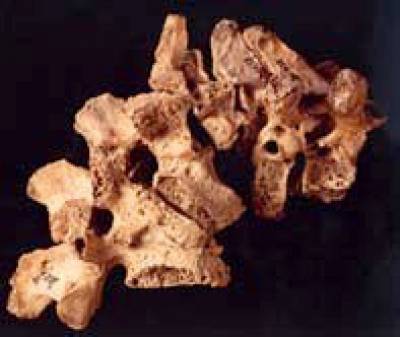This course introduces the anatomy of the bones of the postcranial skeleton.

This course is confined almost entirely to the postcranial skeleton (the skull is covered in detail in ARCL0115: Variation and Evolution of the Human Skull).
It is intended to introduce the anatomy of the bones, the ways in which they vary in size and shape, the information that this yields about the age and sex of the individual, the diseases that can be diagnosed from bones and the palaeoepidemiological interpretations that can be made.
The course provides students with some of the skills required to produce a basic report on a small collection of human remains, or plan a limited research project, under the supervision of a more experienced researcher.
Aims of the course
This course is confined almost entirely to the postcranial skeleton (the skull is covered in detail in ARCL0115). It is intended to introduce the anatomy of the bones, the ways in which they vary in size and shape, the information that this yields about the age and sex of the individual, the diseases that can be diagnosed from bones and some of the palaeoepidemiological interpretations that can be made.
Objectives
No masters level course can provide a full professional training that would allow a student to operate independently on graduation. It is intended, however, that this course will provide students with the skills required to plan a research project, under the supervision of a more experienced researcher. With this in mind, when they have successfully completed the course, students should:
- be able to identify confidently all the bones of the postcranial human skeleton in both adult and juvenile remains.
- be able to label the main features and landmarks of individual bones
- have an understanding of variation in size and shape, and its interpretation in terms of sexual dimorphism, growth and development.
- be able to take the most commonly used postcranial bone measurements.
- have an understanding of the methods used for estimating age at death from the skeleton, and their limitations.
- be able to identify and record the most common types of pathological lesions and developmental anomalies seen in skeletons and understand the ways in which they may be interpreted.
Learning Outcomes
On successful completion of the course students should be able to demonstrate general skills of observation and inference, critical reflection and application of acquired knowledge.
Teaching Methods
The course is taught through lectures and practicals. Each week there is a lecture which introduces a topic in the study of the skull and prepares students for the practical session later in the week. Most lectures are based around Powerpoint presentations and these are available on online teaching resources that you will be able to access at any time on a password controlled UCL website. Details of how to do this will be given during the first week of the course. Practicals are to teach students the identification skills required, more general understanding of the anatomical structure of the skull, experience of sex and age estimation, measurement and non-metrical variation. Most practicals are supported by worksheets and other handouts which are distributed each week.
Course information
- Code: ARCL0114
- Credits: 15
- Coordinator: Rebecca Watts
- Prerequisite: This course does not have a prerequisite although, if you have no previous experience of the skeleton, it would be sensible to ask the advice of the course coordinator.
- Handbook: open»
For registered students
Availability
- Runs every year
 Close
Close

